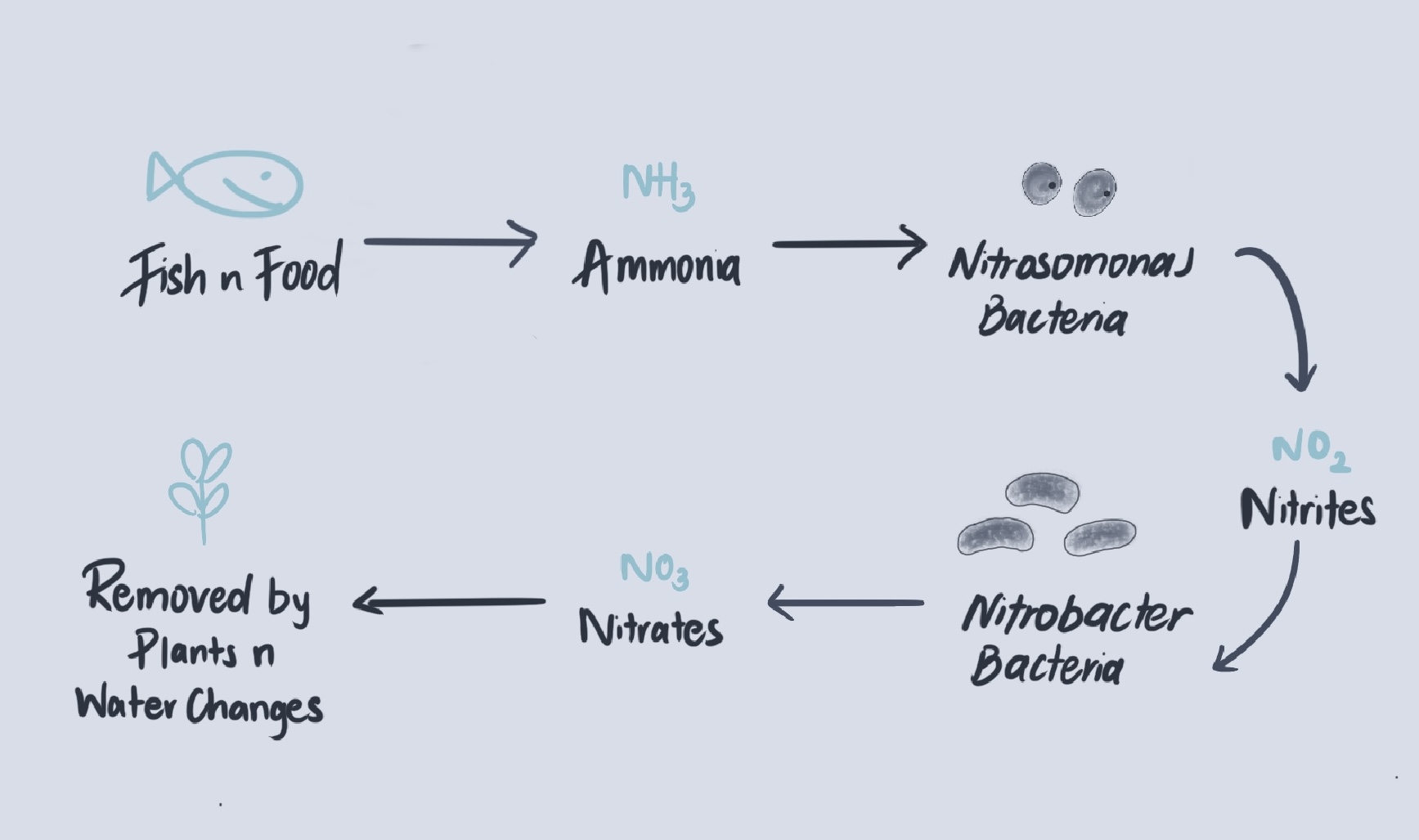Nitrogen Cycle

Naturally, the nitrogen cycle is a complete cycle where nitrogen goes from air → plant → animal → bacteria → air.
In an aquarium though, the nitrogen process is less like a loop and more like a cascade, involving the continuous chemical degradation of nitrogenous compounds from ammonia → nitrite → nitrate.
The end products, nitrates, are then taken up by aquarium plants or removed by other means.
Various bacteria move the wastes from step to step, enabling the nitrogen process, and hence these bacteria must be established and fostered over time to effectively convert and remove all the waste toxins.
In an aquarium, this process is established over time, taking up to 3 months before a new aquarium has fully converted its wastes into nitrate. The method of stocking your aquarium gradually with younger, smaller fish allows the nitrogen-converting bacteria to grow and keep pace with the gradual increase of waste matter.
Ammonia
The first step in the nitrogen process is ammonia, a toxic, colourless and pungent gas, formed when fish urea and proteins get converted by bacteria. Ammonia content rising beyond healthy levels could be caused by overfeeding or overpopulation.
A method of maintaining the balance is to introduce “nitrogen-fixing bacteria” to oxidise the ammonia, changing it to Nitrite.
Nitrite
The second step in the nitrogen cycle is nitrite, a common cause of aquarium fishes’ deaths, formed through the partial oxidation of ammonium ions.
Methods to prevent the build-up of nitrite is to feed sparingly, and that there are not too many animals in the aquarium. Partial water changes should also be carried out regularly, replacing around 1/5th of the total volume with well-aged and not tap water.
Nitrate
The third and last step in the nitrogen cycle is nitrate, a substance far less lethal than nitrites but still of some significance. They are formed through the breakdown of animal protein and ammonium compounds, such as urine, excrement and dead organic matter. Even though most freshwater tropical fish and other aquarium inhabitants can tolerate even large quantities of nitrates, precautionary measures should still be taken to prevent a dangerous build-up of nitrates.
This can be done through sparing feeding and maintaining a small animal population.
Aquatic plants actively use nitrogen and can greatly reduce the levels of nitrate in an aquarium in a well-adjusted aquarium as well. In an artificial unplanted ecosystem, the tank owner must takeover the role of plants in removing nitrates at this final stage of the nitrogen process
How to reduce nitrogen compounds
Nitrites are the most dangerous to aquarium fish, so they are the compounds to guard against.- The simplest step is to feed sparingly, making sure they are not too many animals in the tank
- Regularly carry out partial water changes, replacing at most 20% of the aquarium’s total volume with well-aged water, which is just water that has been allowed to sit for up to a few days, instead of tap water fresh from the tap. (read more if you’d like)
- Make sure there are not too many living, waste-producing animals in the aquarium. Even though snails, catfish and algae eaters are “cleaner fish”, they still produce waste and add to the toxins in the nitrogen process